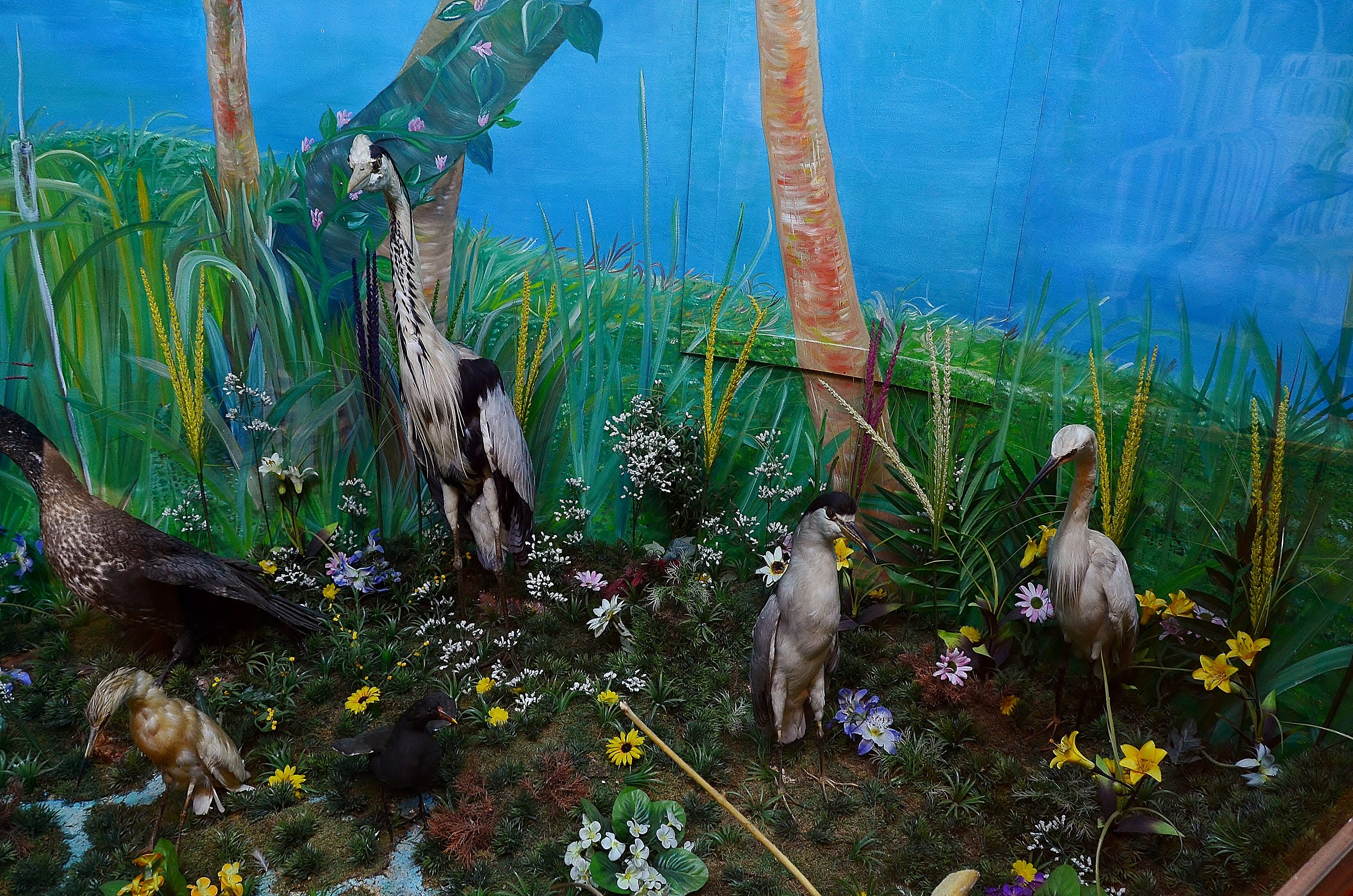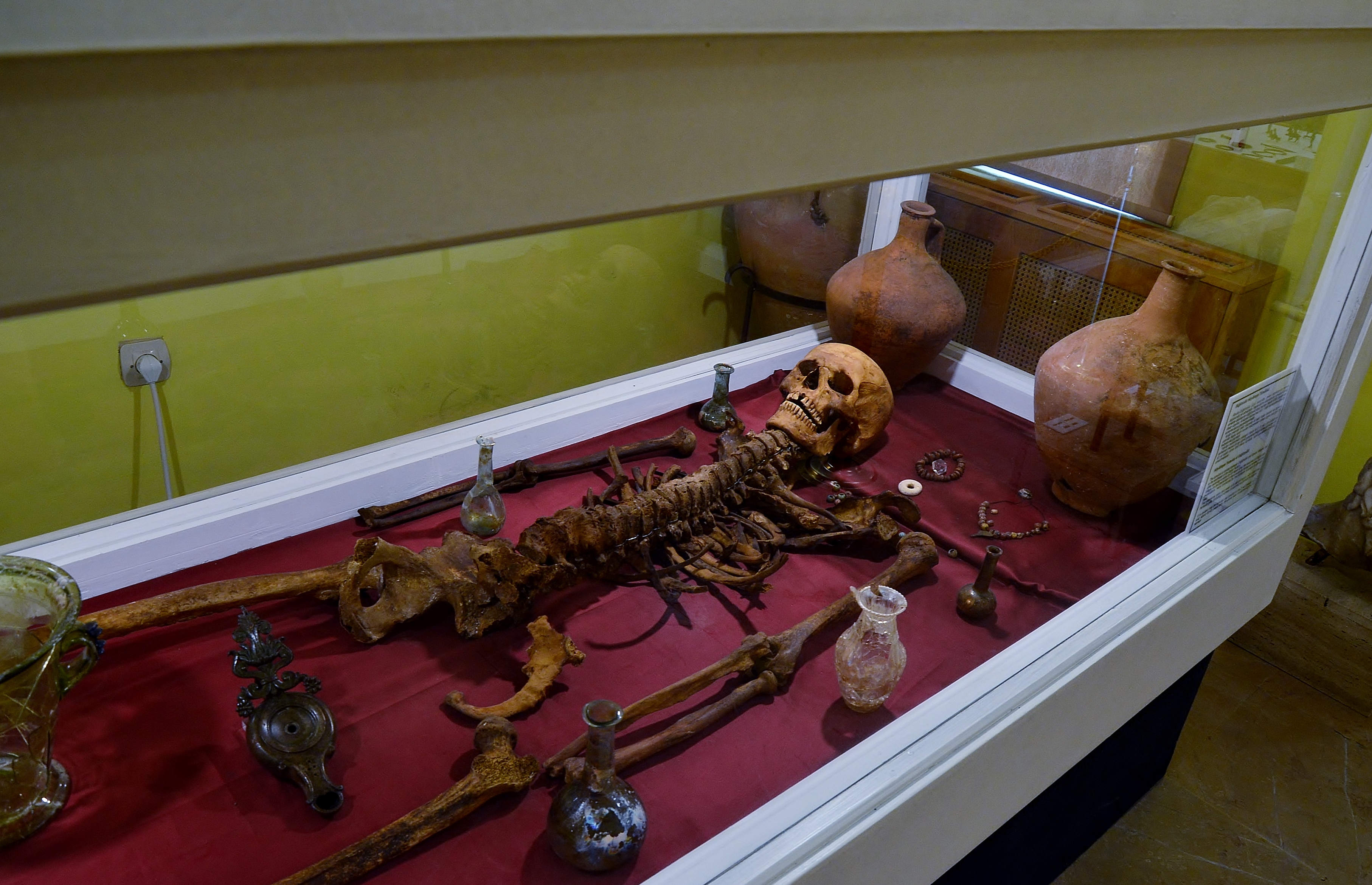KńĪrklareli Museum on:
[Wikipedia]
[Google]
[Amazon]
KńĪrklareli Museum ( tr, KńĪrklareli M√ľzesi) is a national museum in
 A large room on the first floor is reserved for the collection of natural history. A total of 102 species native to the region, including 76 taxidermized bird and mammal species, are on display in their natural environment. Some of the animals exhibited are
A large room on the first floor is reserved for the collection of natural history. A total of 102 species native to the region, including 76 taxidermized bird and mammal species, are on display in their natural environment. Some of the animals exhibited are  The exhibits of the ethnography section share the upper floor with the archaeology section. This section consists of 188 items depicting
The exhibits of the ethnography section share the upper floor with the archaeology section. This section consists of 188 items depicting  The 236 archaeological artifacts are all excavated finds from sites around KńĪrklareli: in the settlements of AŇüańüńĪpńĪnar, KanlńĪge√ßit, and Tilkiburnu; and in the
The 236 archaeological artifacts are all excavated finds from sites around KńĪrklareli: in the settlements of AŇüańüńĪpńĪnar, KanlńĪge√ßit, and Tilkiburnu; and in the
KńĪrklareli
KńĪrklareli () is a city within KńĪrklareli Province in the European part of Turkey.
Name
It is not clearly known when the city was founded, nor under what name. The Byzantine Greeks called it Sar√†nta Ekklisi√®s (''ő£őĪŌĀő¨őĹŌĄőĪ őēőļőļőĽő∑ŌÉőĻő ...
, Turkey, exhibiting natural history specimens, ethnographical items related to the region's history of cultural life, and archaeological
Archaeology or archeology is the scientific study of human activity through the recovery and analysis of material culture. The archaeological record consists of artifacts, architecture, biofacts or ecofacts, sites, and cultural landscap ...
artifacts found in and around the city. The director of the museum is Derya Balkan.
Description
The museum's building was constructed for MutasarrńĪf (Governor) NeŇüet Pasha and mayor HacńĪ Mestan Efendi in 1894. It was used as the municipality office until 1962. In the 1970s, the building was vacated and left to decay. In 1983, restoration of the building began and continued with interruptions, until it was completed in 1993 and opened as a museum. The museum is a two-story building with a basement. Thereinforced concrete
Reinforced concrete (RC), also called reinforced cement concrete (RCC) and ferroconcrete, is a composite material in which concrete's relatively low ultimate tensile strength, tensile strength and ductility are compensated for by the inclusion ...
building has arch-like windows on all four sides. A bay window
A bay window is a window space projecting outward from the main walls of a building and forming a bay in a room.
Types
Bay window is a generic term for all protruding window constructions, regardless of whether they are curved or angular, or ...
on the first floor, in the center of the building front, is supported by four columns flanking the main entrance. The museum consists of three sections for "culture and nature", "ethnography", and "archaeology". The museum has a total of 3,507 registered items, including 1,882 coins, 1,110 archaeological artifacts, and 515 items related to ethnography.
The museum serves as a center for historic research of the region, as well as collaboration with scientific institutions, assisting and guiding them. Its main duty is to register the natural and cultural properties in the region. Currently, the register lists a total of 269 preservations, including 98 archaeological sites, 3 urban sites, 13 natural reserve areas, and 155 single-building historic sites.
The museum is open seven days a week from 9:00‚Äď18:00 local time between April 15 and October 26. It is closed on Mondays. Access to the museum is free of charge. In 2013, a total of 9,362 people, including 417 foreign tourists, visited the museum. In 2014, the number of visitors was 9,066, of which 535 came from abroad.
Natural history section
extinct
Extinction is the termination of a kind of organism or of a group of kinds (taxon), usually a species. The moment of extinction is generally considered to be the death of the last individual of the species, although the capacity to breed and ...
and some are endangered species
An endangered species is a species that is very likely to become extinct in the near future, either worldwide or in a particular political jurisdiction. Endangered species may be at risk due to factors such as habitat loss, poaching and inv ...
. This section draws the interest of high school students, university biology students, and researchers.
Ethnography section
rural area
In general, a rural area or a countryside is a geographic area that is located outside towns and cities. Typical rural areas have a low population density and small settlements. Agricultural areas and areas with forestry typically are descr ...
life in the 19th and early 20th centuries, and of city life in KńĪrklareli in the same period. Carpets, clothes, jewellery, and household objects are on display.
Archaeology section
tumuli
A tumulus (plural tumuli) is a mound of earth and stones raised over a grave or graves. Tumuli are also known as barrows, burial mounds or ''kurgans'', and may be found throughout much of the world. A cairn, which is a mound of stones built ...
of ńįslambeyli, PńĪnarhisar, Alpullu H√∂y√ľktepe, and Dolhan. There are fossil
A fossil (from Classical Latin , ) is any preserved remains, impression, or trace of any once-living thing from a past geological age. Examples include bones, shells, exoskeletons, stone imprints of animals or microbes, objects preserved ...
s of marine and land species, and trees, spanning the time from the Holocene
The Holocene ( ) is the current geological epoch. It began approximately 11,650 cal years Before Present (), after the Last Glacial Period, which concluded with the Holocene glacial retreat. The Holocene and the preceding Pleistocene togeth ...
geological
Geology () is a branch of natural science concerned with Earth and other astronomical objects, the features or rocks of which it is composed, and the processes by which they change over time. Modern geology significantly overlaps all other E ...
epoch
In chronology and periodization, an epoch or reference epoch is an instant in time chosen as the origin of a particular calendar era. The "epoch" serves as a reference point from which time is measured.
The moment of epoch is usually decided ...
to the era of Ancient Rome
In modern historiography, ancient Rome refers to Roman people, Roman civilisation from the founding of the city of Rome in the 8th century BC to the collapse of the Western Roman Empire in the 5th century AD. It encompasses the Roman Kingdom ...
. There are archaeological artifacts from the Neolithic
The Neolithic period, or New Stone Age, is an Old World archaeological period and the final division of the Stone Age. It saw the Neolithic Revolution, a wide-ranging set of developments that appear to have arisen independently in several pa ...
(New Stone Age), Chalcolithic
The Copper Age, also called the Chalcolithic (; from grc-gre, ŌáőĪőĽőļŌĆŌā ''khalk√≥s'', "copper" and ''l√≠thos'', "Rock (geology), stone") or (A)eneolithic (from Latin ''wikt:aeneus, aeneus'' "of copper"), is an list of archaeologi ...
(Copper Age), and Iron Age
The Iron Age is the final epoch of the three-age division of the prehistory and protohistory of humanity. It was preceded by the Stone Age ( Paleolithic, Mesolithic, Neolithic) and the Bronze Age ( Chalcolithic). The concept has been mostly ...
, as well as from the eras of Ancient Greece
Ancient Greece ( el, ŠľôőĽőĽő¨Ōā, Hell√°s) was a northeastern Mediterranean civilization, existing from the Greek Dark Ages of the 12th‚Äď9th centuries BC to the end of classical antiquity ( AD 600), that comprised a loose collection of cu ...
, Ancient Rome
In modern historiography, ancient Rome refers to Roman people, Roman civilisation from the founding of the city of Rome in the 8th century BC to the collapse of the Western Roman Empire in the 5th century AD. It encompasses the Roman Kingdom ...
, Byzantine Empire
The Byzantine Empire, also referred to as the Eastern Roman Empire or Byzantium, was the continuation of the Roman Empire primarily in its eastern provinces during Late Antiquity and the Middle Ages, when its capital city was Constantinopl ...
, and Ottoman Empire
The Ottoman Empire, * ; is an archaic version. The definite article forms and were synonymous * and el, –ěőłŌČőľőĪőĹőĻőļőģ őĎŌÖŌĄőŅőļŌĀőĪŌĄőŅŌĀőĮőĪ, OthŇćmanikńď Avtokratoria, label=none * info page on book at Martin Luther University ...
.
A sample collection of 72 coins from Ancient Greece, Ancient Rome, Byzantine Empire, and Ottoman Empire is on exhibition. A life-size sculpture of a female human torso stands in the entrance hall on the ground floor. Marble reliefs from an amphitheatre
An amphitheatre (British English) or amphitheater (American English; both ) is an open-air venue used for entertainment, performances, and sports. The term derives from the ancient Greek ('), from ('), meaning "on both sides" or "around" and ...
of the Late Roman Empire (2nd century), unearthed between 1995 and 1997 in Vize, are exhibited on the staircase wall. Due to new archaeological finds unearthed at ongoing excavations and limited space in the museum, some archaeological items are interchanged from time to time.
References
External links
{{DEFAULTSORT:Kirklareli Museum Natural history museums in Turkey Archaeological museums in Turkey Ethnographic museums in Turkey Buildings and structures in KńĪrklareli Province Tourist attractions in KńĪrklareli ProvinceMuseum
A museum ( ; plural museums or, rarely, musea) is a building or institution that cares for and displays a collection of artifacts and other objects of artistic, cultural, historical, or scientific importance. Many public museums make th ...
Museums established in 1993
1993 establishments in Turkey